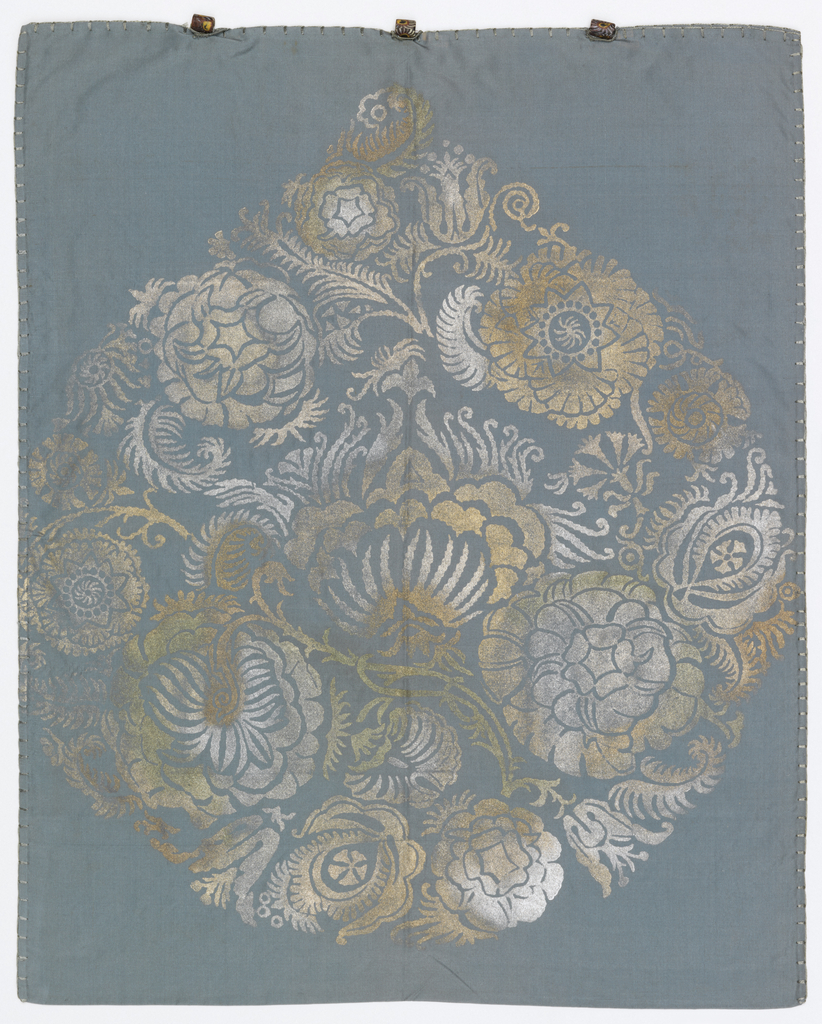In the early twentieth century, Italian painter and textile designer Maria Monaci Gallenga achieved international fame for her extraordinary costume and textile designs. Born into a family of prominent intellectuals and educated in literature and painting, Gallenga became fascinated with the artworks of ancient, medieval and Renaissance Italy as a teenager. In the nineteen-teens, she began to re-envision historic textile patterns and clothing styles as simple yet elegant fabrics and garments that suited modern tastes and lifestyles.
In collaboration with her husband, a professor at the University of Rome, Gallenga developed an innovative printing process – where a mixture of brass, copper and zinc pigments was block printed or brushed onto fabric – to achieve her designs. Although Gallenga was not the only designer at this time to use these hues, contemporary critics noted that her renderings were especially well-executed and harmonious, and this process would become her signature. Throughout her career, Gallenga collaborated with other Italian artists as well as showcased their creations in her boutiques in Italy and Paris. Many of her textiles from the 1920s and 1930s feature patterns designed by leading Italian artists, such as painter and glassmaker Vittorio Zecchin, husband-and-wife painters Carlo and Fides Testi, and architect Emanuele Cito di Filomarino.
In these collaborations, the artists would supply the design, and Gallenga would determine its scale, color and the cloth on which it would be printed. While many of her domestic textiles were made of bisso, a lightweight, semi-sheer cotton or linen, she also produced designs in heavier fabrics, such as velvet.
The leafy medallions found on these bed and pillow covers were designed by the Italian costume designer Gino Sensani. Although used as a furnishing fabric here, the pattern was also used on clothing. It is seen on a velvet mantle worn by actress Donna Maria Corsini Carolina in the play “Sogno di una perla,” which debuted in Florence in May 1924.
Laura L. Camerlengo is the Exhibition Assistant in the department of Costume and Textiles at the Philadelphia Museum of Art. Her upcoming exhibition, “Reinventing Italy’s Decorative Arts: Velvets and Glass from the Interwar Era,” will feature the work of Maria Monaci Gallenga. She is the author of the DesignFile e-book, The Miser’s Purse.
